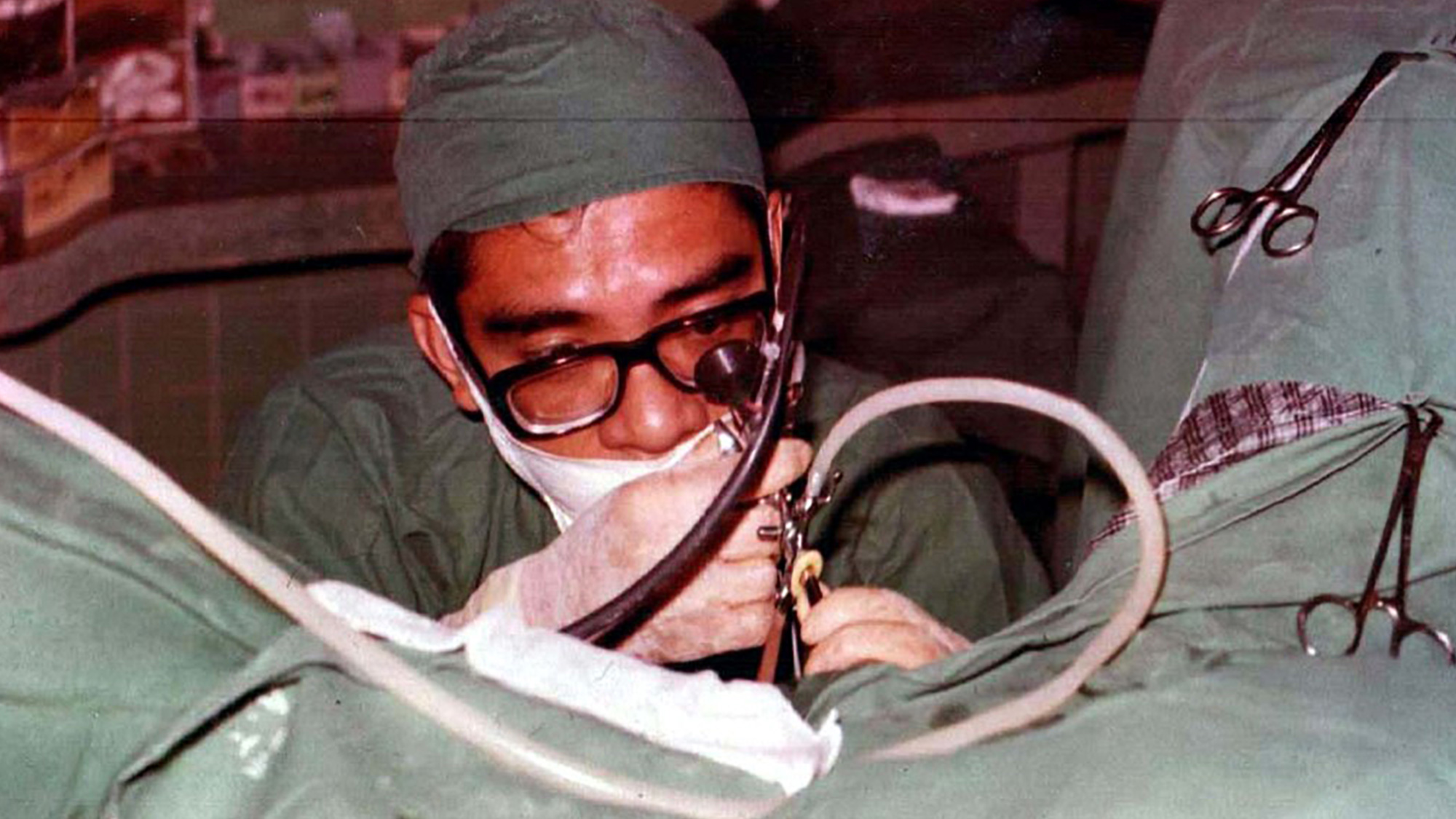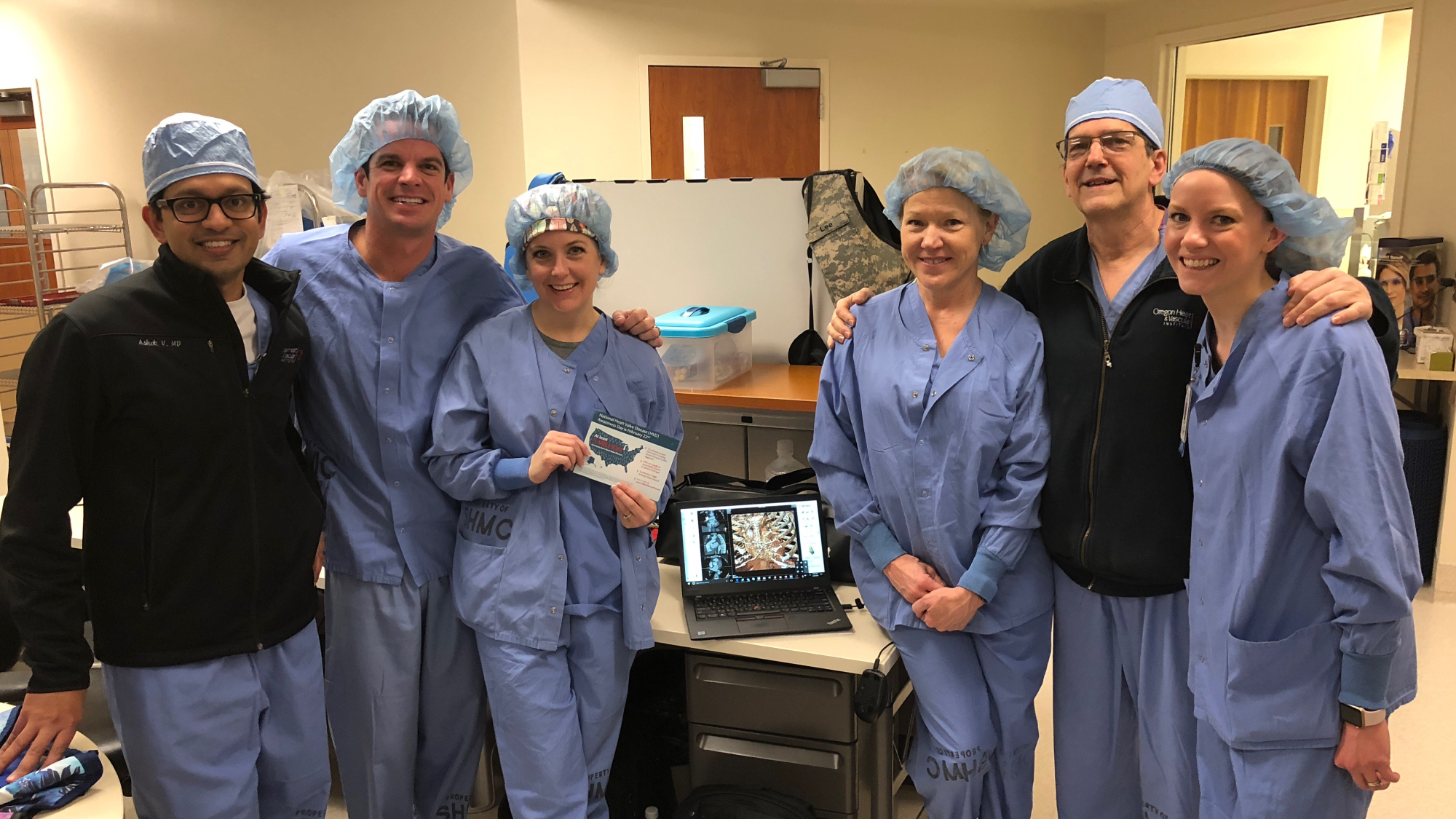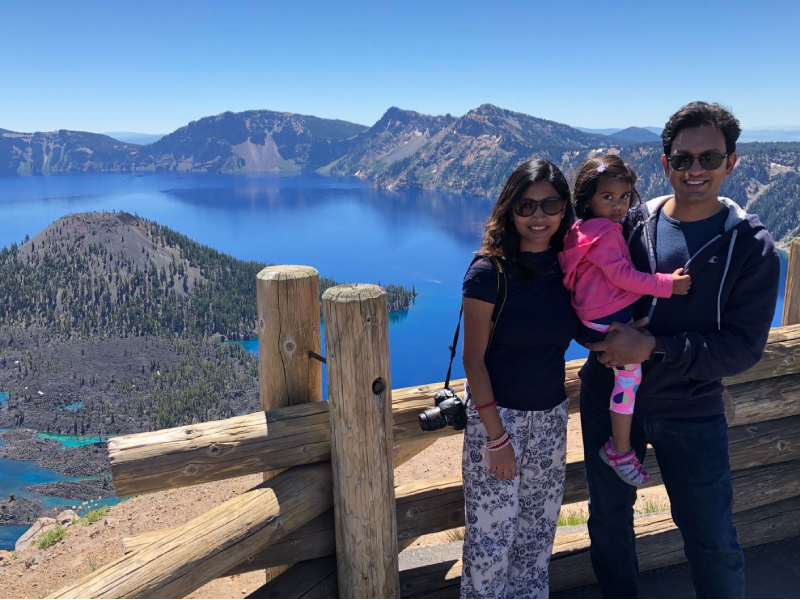He Pulled a Metal Shard from a Farmer’s Heart
NUS Medicine alumnus Dr Ashok Venkataraman (Class of 2007) was called to extract a 2.5cm piece of barbed wire that had pierced the heart of a farmer in Eugene, Oregon in the United States. That emergency procedure saved the life of the 62-year-old man, who had suffered the accident when the metal shard was caught by his mechanical flail mower and shot into his rib cage. MediCine caught up with Dr Venkataraman, who is an Attending Cardiothoracic Surgeon at the Oregon Heart & Vascular Institute.
What led you to do your residency in the US, and why North Carolina?
I have always been fascinated by the residency training system in the US particularly with surgery. I had made a decision to pursue training in the US quite early on in medical school. The structured curriculum with protected case volumes for each trainee was appealing. Moreover, I wanted to be fully trained in general surgery first and then pursue cardiothoracic surgery training. In my first medical officer posting in surgery in Singapore General Hospital, I took a three-week break and made my first trip to the US to do a visiting rotation in a US academic medical center. A professor of cardiothoracic surgery at the University of North Carolina invited me to spend an elective with them. I spent two weeks there, loved it so much that six months later, I started residency at that very place.
Did your undergraduate medical studies at NUS prepare you for US residency?
Most certainly! Our curriculum in NUS is very thorough and comprehensive. Our houseman year of training in our local hospitals in Singapore really completes our training. I was well prepared for my US residency. But, I still had to work very hard to settle into the training programme in the US because a number of things are different. The hours in the US training programme were longer, and the culture was quite different too.

A screenshot of the article by The Register Guard on how Dr Venkataraman had to conduct an emergency open heart surgery to save a man’s life.

With surgical colleagues.
What drew you to specialise in surgery, and then cardiac surgery?
I have wanted to be heart surgeon since I was 12 years old. I never strayed away from that. Cardiothoracic has always appealed to me. In my first year of medical school in Singapore, I was attached to a professor of cardiac surgery at the National University Hospital and spent a lot time with him working on projects. Throughout my medical school days in NUS, I spent extra time with all the local cardiac surgeons around Singapore – at the KK Women and Children’s hospital, NUH and SGH. The time spent with them continued to cultivate the interest and sowed the seeds to pursue training in the United States as many of these surgeons had done Healthcare Manpower Development Programme (HMDP) rotations here in the US.
What is your work day like at Peacehealth Sacred Heart Medical Centre RiverBend?
Here at Peacehealth Sacred Heart Medical Centre RiverBend, my days are pretty busy with surgery at least four out of five days of the work week. I am usually at the hospital by 6.15am, and finish rounds by 7.15am. Then, there is usually some formal meeting of sorts before I am in the operating room by 8.30am for the first case. On many days, there will be a second case. Some days, there will be clinics in the afternoon. I am on call every third day on average, and every third weekend on average. There can be the occasional emergency case at night too, but that is quite rare these days, as I don’t do transplant surgery at RiverBend. I did a lot of heart and lung transplants in training and those always happen in the middle of the night.
That patient with a metal spike in his heart that made the news – it wasn’t a typical, I guess!
Certainly not! But, penetrating traumatic injuries to the chest are way more common in the US, so we do see a fair share of similar trauma cases.
Popular urban legend has it that surgeons and trauma specialists in American hospitals get lots of practice and experience because of gun violence. What is your view?
It’s certainly true in some ways. I did a full general surgery and trauma surgery residency (five years + one year research) before I did my cardiothoracic surgery fellowship (an additional two years). So in my eight years of training, I have seen a lot of trauma. From gun shots, to stab wounds, to motor vehicle injuries from accidents, assaults, and even disaster victims from hurricanes and such. Reading about them is one thing, managing these complex cases in the operating room in an emergency is quite different. It has made me a better surgeon in many ways.
How do you spend your weekends?
Oregon and the Pacific Northwest, where I live, is a place of phenomenal natural beauty. We also get four nice seasons. And there are lots of things to do outdoors. From skiing, to hiking to water sports. We also travel a fair amount with family to neighboring states of Washington and California to visit friends or to visit bigger cities.
What makes you stay on in Oregon? Does home ever beckon?
At present, we are enjoying ourselves here. I have a satisfying and busy practice and an excellent team that I work with daily that makes it very enjoyable. Home (Singapore) always beckons. But, it’s more important to be able to do what you love and serve people wherever you are with your individual skillset.
Are your parents with you, or back here in Singapore?
They are still in Singapore! And my only sibling is a cardiologist in Australia. But FaceTime makes life easier. We travel a fair bit and my parents visit us here often.
What would you say to an aspiring med student who wants to practise in the US?
It is a very worthwhile experience. I love every minute of it. But, there are a lot of challenges for the aspiring foreign medical graduate (seeking) to succeed in the US. Certain specialties, particularly surgical, are highly competitive. And there are some immigration hurdles as well that need to be navigated. But, careful planning and ample preparation is all that is needed to succeed.

Dr Ashok Venkataraman with his wife and child.
